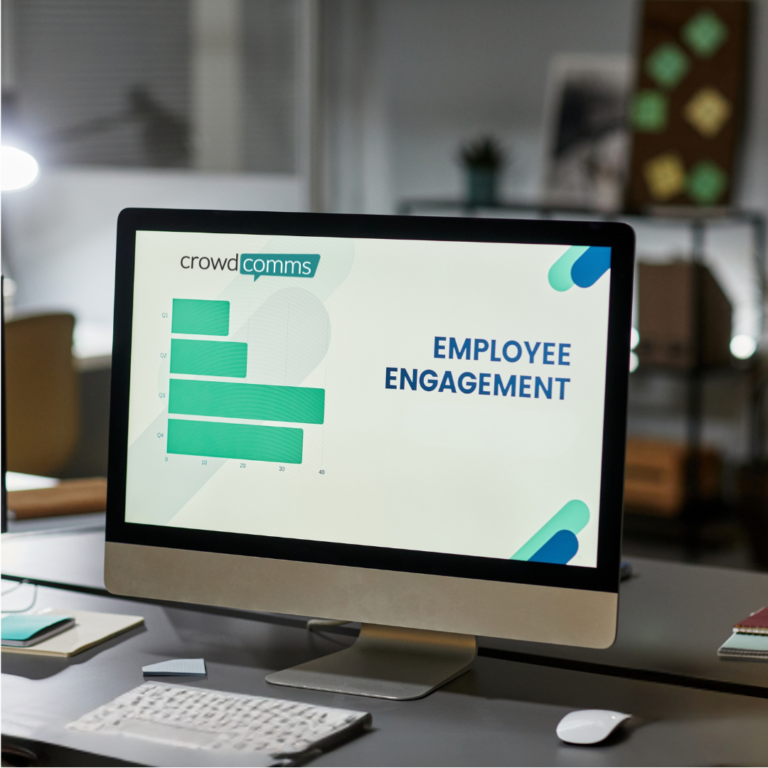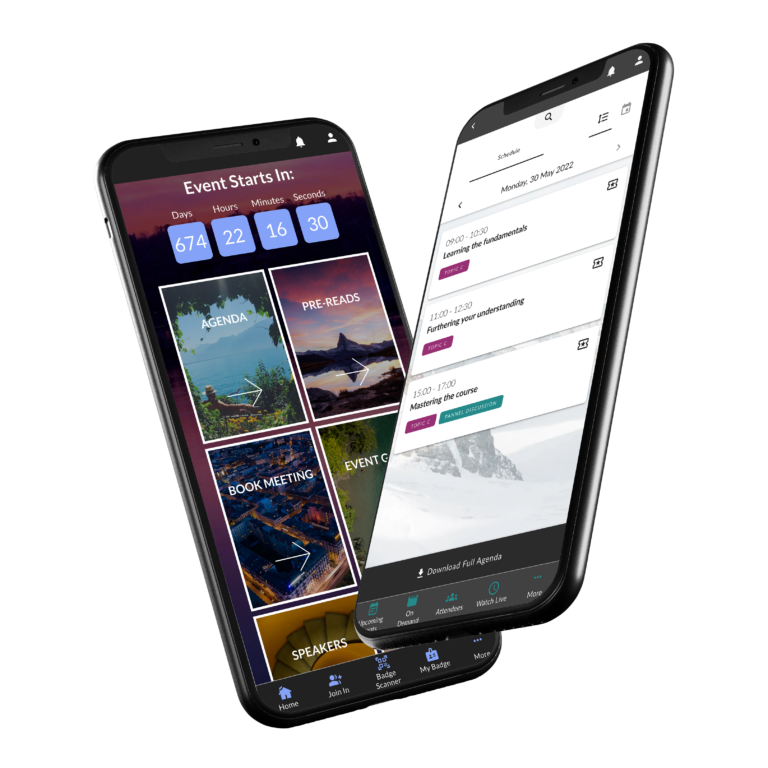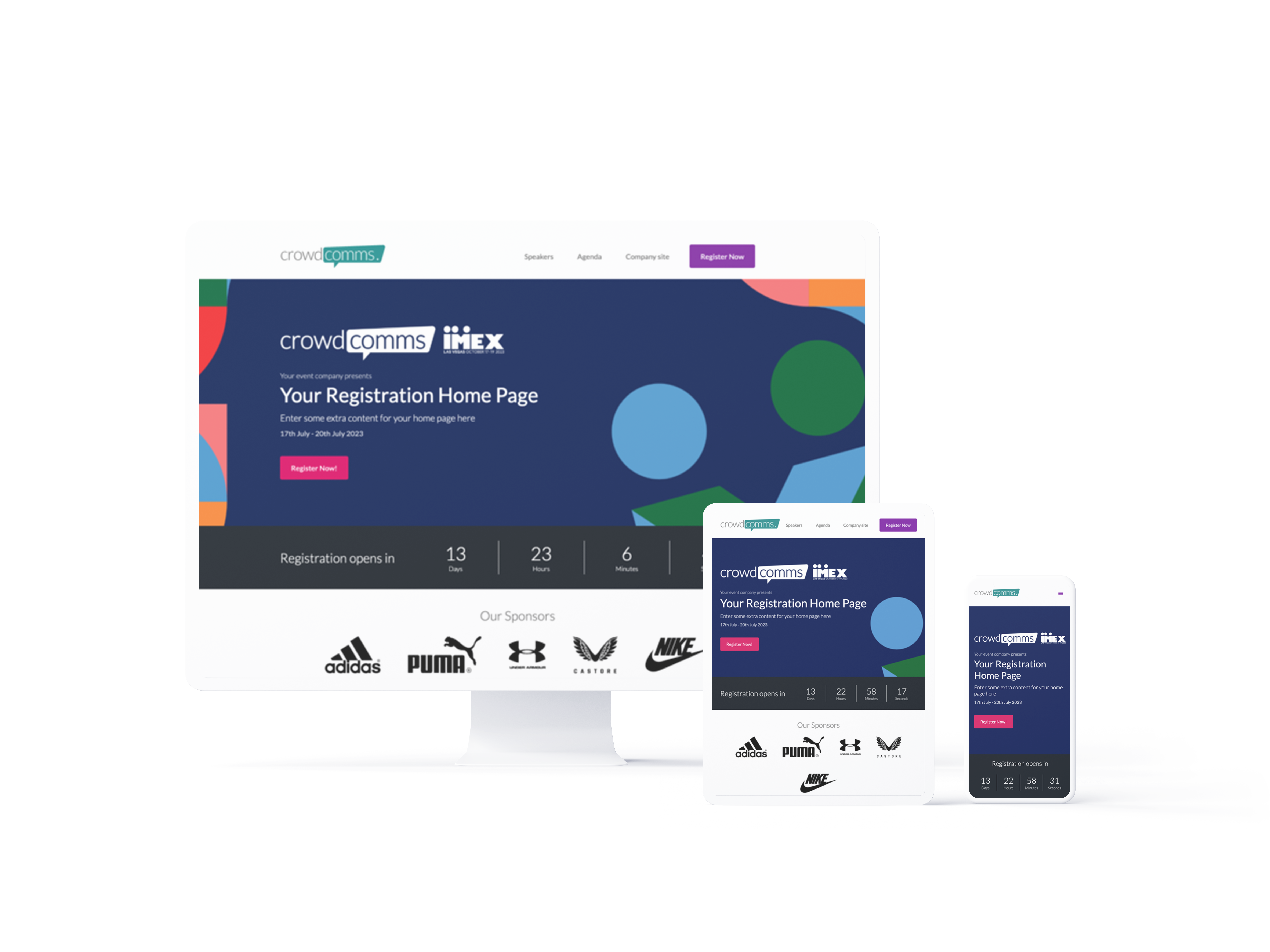
To help you perfect this process, UX expert Will Custard recently joined us on the latest episode of EventAdvice by CrowdComms. Below, we explore the insights gathered from this podcast, covering topics like customisation, no-code tools, accessibility, personalisation, and even the future impact of AI on event registration.
Why Event Registration UX Matters
Creating a seamless and engaging user experience (UX) for event registration is vital for success in modern events. Whether it’s a trade show, corporate conference, or fundraising gala, registration UX plays a crucial role in ensuring attendees feel valued and excited. A poorly designed process can frustrate users and lead to high abandonment rates. Platforms like CrowdComms registration tools are taking the lead in transforming the entire process from clunky and outdated to streamlined and effective.
Customising Event Registration Forms
Customising event registration forms goes far beyond slapping on a logo and adjusting brand colours. Will Custard emphasises that the modern registration form builder must empower event organisers to truly reflect their brand’s personality and values. This level of customisation fosters trust and familiarity with registrants.
Customisation is no longer a luxury. It’s about enabling companies to make their event registration forms look and feel like an organic extension of their brand. Tools like the CrowdComms registration platform allow users to create tailored experiences, whether that means adjusting form layouts, embedding instructional videos, or even offering entirely white-labeled solutions.
Pro Tip:
Focus on building intuitive forms that balance visual appeal and functionality. Use clear branding, logical layouts, and only request information that will drive meaningful personalisation.
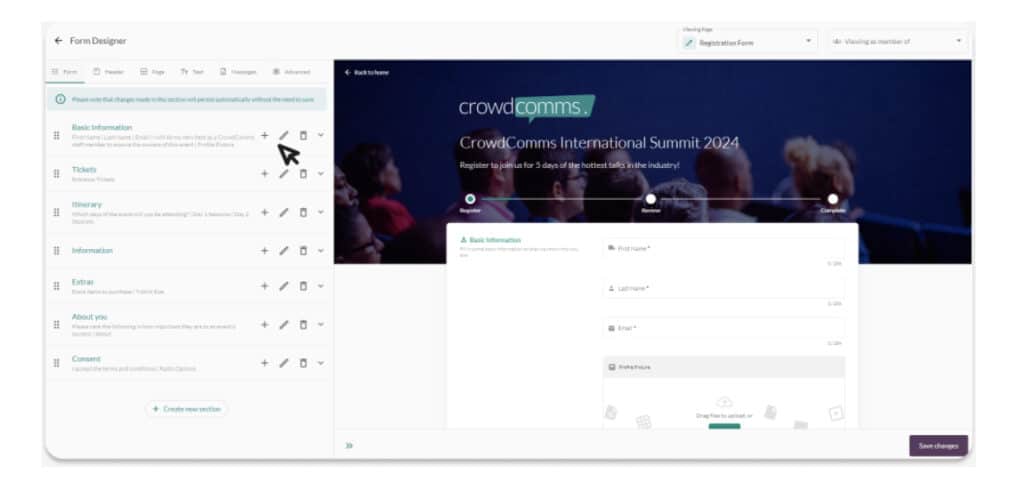
The Role of No-Code Tools in Conference Registration
No-code tools are revolutionising the way event registration forms are designed. Thanks to these tools, like those provided by CrowdComms, event organisers no longer need to rely on developers or IT teams to make edits or create custom forms. With simple drag-and-drop features, teams with little technical expertise can manage every aspect of their registration UX.
Will highlighted how these platforms not only improve flexibility but also shorten project timelines. Whether it’s tweaking form fields or localising content for global attendees, registration form builders powered by no-code solutions offer speed and simplicity while reducing bottlenecks.
The Intersection of Branding and Event Registration
Your attendees should feel that your event aligns with your brand’s identity from the very first click. Effective branding is much more than adding a logo—it’s about creating a user experience that reflects your brand’s ethos. During the podcast, Will explained the importance of crafting forms that don’t merely function but also visually resonate with users.
For example, attendees should have a consistent experience, whether they’re on your event registration forms, the event app, or the on-site badge kiosk. By leveraging CrowdComms tools, organisations can ensure their event technology feels like a natural continuation of their broader marketing efforts.
Real-Life Examples:
- Google’s own registration forms always carry their signature clean aesthetic with precise spacing and intuitive iconography.
- Make-A-Wish uses consistent design elements like smiling images that align with their overarching brand message of joy and fulfillment.
The Importance of Accessibility in Registration UX
Accessibility must be a priority in event registration UX. According to Will Custard, failing to make your forms accessible could exclude up to 20% of potential attendees right from the start. Accessibility considerations might include ensuring compatibility with screen readers, responsive design for mobile users, and the ability to enlarge text for those with limited vision.
Flexible tools within the CrowdComms registration ecosystem allow admins to create forms that cater to everyone. Whether it’s offering multiple styles of question display (e.g., single-question views or full-page forms) or adapting forms to different devices, accessibility benefits all attendees, not just those with specific needs.
Balancing Data Collection and Personalisation
Event organisers face a crucial challenge when determining how much data to collect during registration. While some prefer to gather minimal details, others pile on dozens of questions. Will argued for a balanced approach—collect only what you need and use it wisely to enhance personalisation.
For instance, asking for dietary preferences during registration might enable you to automatically group attendees and streamline meal service. Similarly, capturing session interests can ensure attendees are shown a personalised agenda when they open the event app. Platforms like CrowdComms registration tools allow for seamless data mapping, where a single form submission can populate everything from custom badges to event recommendations.
Best Practice:
Always provide context for why you’re asking for specific data. Explain how it will improve the registrant’s experience. This transparency builds trust and increases form completion rates.
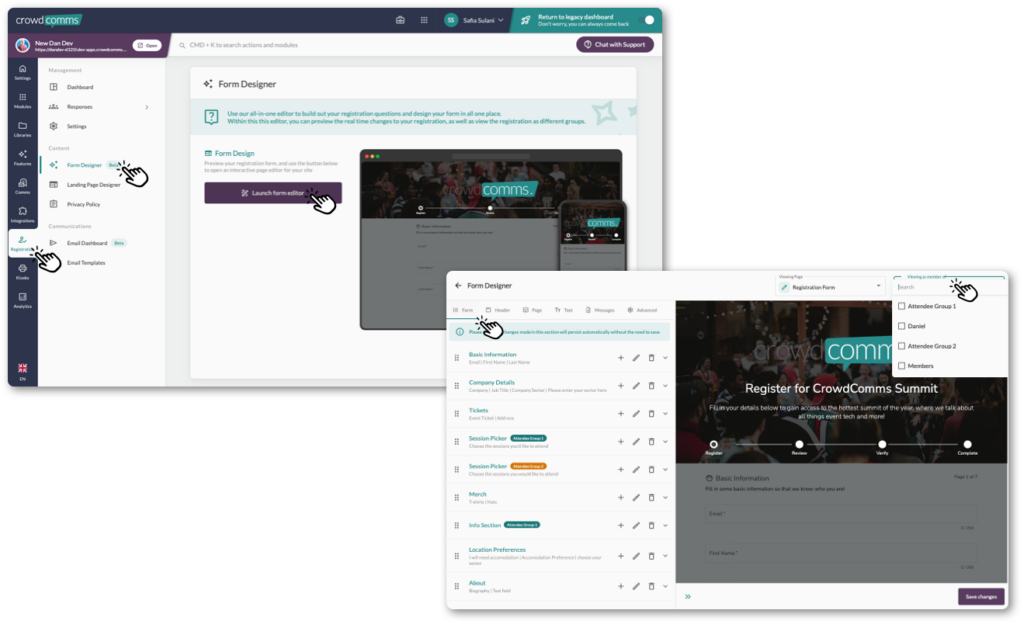
The Future of Event Registration with AI
Looking ahead, AI stands to revolutionise conference registration by enhancing both efficiency and personalisation. During the podcast, Will discussed how AI tools could make the experience more intuitive, such as:
- Automating form creation using voice inputs.
- Using AI-driven insights to predict attendee preferences and optimise networking connections.
- Leveraging advanced data analysis to recommend sessions, meetings, or suppliers based on shared interests.
While still maturing, AI technology can turn registration data into actionable insights that improve both attendee satisfaction and event outcomes. Platforms like CrowdComms are already exploring how natural language processing and machine learning can simplify complex setups and create unparalleled personalised experiences.
Key Takeaways for Event Organisers
To wrap up the conversation, here are some must-follow strategies from Will Custard:
- Simplify registration forms – Avoid unnecessary fields and keep the experience straightforward.
- Prioritise mobile optimisation – Many users register while on their phones. Ensure seamless functionality across devices.
- Invest in branding consistency – Make your registration forms look like a natural extension of your brand.
- Improve accessibility – Everyone should be able to register quickly and without barriers.
- Leverage personalisation – Use data from registration to enhance attendee experiences during the event.
- Stay future-focused – Explore AI and automation tools to stay ahead of the curve in event technology.
Transform Your Event Registration with CrowdComms
If you’re struggling with clunky, outdated processes or finding yourself unable to match the customisation and efficiency demanded by today’s audience, it might be time to explore alternatives like CrowdComms registration solutions. With intuitive tools and a focus on registration UX, CrowdComms can help you deliver an exceptional experience from first click to final follow-up.
Stay ahead of the competition, enhance your attendee engagement, and unlock the power of innovation in event registration. For more insights and practical tips, explore other episodes of the EventAdvice podcast, and contact CrowdComms to transform your next event.
Watch the latest episode of EventAdvice by CrowdComms, where we sit down with UX expert Will Custard to tackle the challenges of event registration and user experience (UX) design here.


